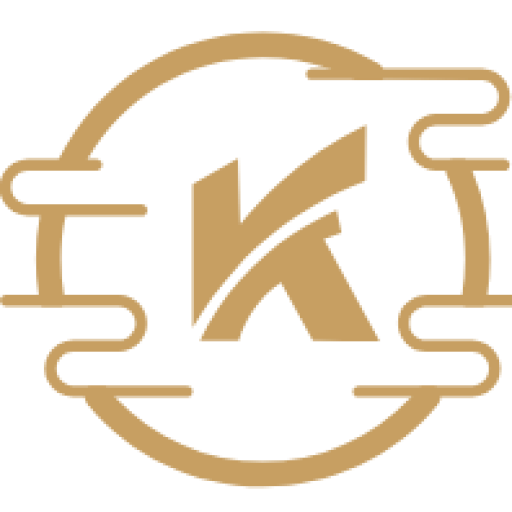Maintaining a consistent fitness routine is one of the best things you can do for your physical health, mental well-being, and long-term quality of life. However, creating a sustainable fitness routine that you can stick to over time is often easier said than done. Many people start with the best of intentions, only to find themselves losing motivation, getting injured, or simply running out of time in their busy schedules. If you’re looking to build a lasting fitness routine that works for you, it’s important to take a realistic, flexible, and balanced approach. Here are some key strategies to help you create a fitness routine that you can enjoy and sustain over the long haul.
Define Your Goals and Find Your “Why”
The first step in creating a sustainable fitness routine is to understand why you want to work out in the first place. What motivates you to stay active? Is it to improve your physical health, boost your energy levels, reduce stress, or perhaps become stronger? Understanding your personal reasons—your “why”—can help you stay committed even when motivation wanes.
Setting clear, achievable goals is crucial. While it’s great to have long-term goals like running a marathon or losing a significant amount of weight, you should also set short-term, actionable goals that provide a sense of achievement along the way. These can include things like exercising three times a week, running your first 5K, or increasing your flexibility. Having a mix of both long-term and short-term goals will keep you motivated and help you see tangible progress.
Start Small and Build Gradually
One of the biggest mistakes people make when starting a fitness routine is going too hard, too fast. Trying to work out intensely every day when you haven’t been active in a while can quickly lead to burnout or injury, causing you to give up. Instead, start small and build gradually.
For instance, if you’re new to exercise, start by dedicating just 20 minutes two to three times a week to physical activity. You could begin with activities like walking, gentle yoga, or light resistance training. Once you’ve established a routine and feel comfortable, you can slowly increase the frequency, duration, and intensity of your workouts. The key is to let your body adapt to physical activity so you don’t feel overwhelmed and can continue making progress without risking injury.
Choose Activities You Enjoy
A sustainable fitness routine must include activities you actually enjoy. If you hate running, trying to force yourself to run every day will only make exercise feel like a chore—and eventually, you’re likely to quit. Instead, experiment with different types of physical activity to see what you enjoy. This could be dancing, swimming, cycling, hiking, weightlifting, yoga, or playing a sport.
When you find something you genuinely enjoy, working out becomes less of a burden and more of a fun, positive experience. Additionally, variety in your workouts helps keep things fresh and prevents you from getting bored. You might do strength training two days a week, take a dance class on another day, and go for a hike over the weekend. By mixing it up, you’re more likely to stay consistent and maintain your fitness routine.
Create a Realistic Schedule
Another key factor in building a sustainable fitness routine is creating a schedule that fits your lifestyle. Many people set unrealistic expectations, like planning to work out at 5 a.m. every day when they’re not naturally morning people. Instead, look at your weekly schedule and identify windows of time when you can realistically fit in a workout.
For some, this might mean working out during lunch breaks, while for others, evenings after work may be the best time. Be honest about your schedule, and find the times that are most convenient and least likely to be interrupted. Aim for a consistent routine, such as three to four days a week, but remember that flexibility is key. If something comes up, don’t stress—move your workout to another time or simply make sure to get back on track the next day.
Focus on Balance: Cardio, Strength, and Flexibility
A well-rounded fitness routine should include a mix of cardiovascular exercise, strength training, and flexibility work. Each type of exercise offers unique benefits, and incorporating all three helps ensure you’re getting a complete workout.
- Cardiovascular Exercise: Activities like running, swimming, cycling, or brisk walking are great for improving cardiovascular health, increasing stamina, and burning calories. Aim for at least 150 minutes of moderate-intensity cardio each week.
- Strength Training: Strength training helps build muscle, improve metabolism, and maintain bone density. You don’t have to lift heavy weights if that’s not your thing; resistance bands, bodyweight exercises, and even yoga can be effective for building strength. Aim to include two to three strength-training sessions per week.
- Flexibility and Mobility: Flexibility work, such as yoga or stretching exercises, helps maintain a full range of motion in your joints, reduces muscle stiffness, and prevents injuries. Even dedicating 10-15 minutes to stretching after a workout or practicing yoga once a week can make a big difference.
Rest and Recovery Are Essential
Many people underestimate the importance of rest and recovery in building a sustainable fitness routine. Pushing yourself too hard without adequate rest can lead to fatigue, burnout, and injuries. Remember that rest days are just as important as your workout days. Your body needs time to repair and build muscle tissue, which helps improve performance and prevent overtraining injuries.
Plan at least one or two rest days each week, and listen to your body. If you feel particularly sore or fatigued, consider taking an extra rest day or opting for a light activity like walking or stretching instead. Incorporating rest into your fitness routine will help you stay consistent in the long term.
Find an Accountability Partner or Group
Staying motivated to work out regularly can be difficult, especially if you’re doing it alone. Finding an accountability partner or joining a fitness group can provide the support you need to stay on track. Working out with a friend, hiring a personal trainer, or joining a local fitness class or sports league can help keep you accountable and make the experience more enjoyable.
Sharing your goals with someone else and having regular check-ins can boost motivation and help you stick to your routine. Additionally, being part of a group adds a social element to your workouts, making them something you look forward to rather than a solo obligation.
Track Your Progress and Celebrate Achievements
Tracking your progress is a great way to stay motivated and see how far you’ve come. Whether it’s keeping a workout journal, using a fitness app, or taking regular photos, documenting your progress can help you stay on course and adjust your goals as needed.
Celebrate both the small and large milestones along the way. Whether it’s completing your first month of consistent workouts, hitting a new personal best, or noticing improved flexibility, these achievements are worth acknowledging. Celebrating progress reinforces positive behavior and keeps you motivated to continue.
Overcoming Obstacles and Staying Consistent
It’s normal to face challenges when building a sustainable fitness routine, but the key is not letting those obstacles derail you entirely. Life is unpredictable, and there will be times when it’s harder to stick to your routine—whether it’s due to work demands, family responsibilities, travel, or even just feeling unmotivated.
Instead of getting discouraged, accept that setbacks are part of the journey and focus on how you can adapt. If you miss a workout, don’t try to make up for it by overdoing it next time. Simply get back on track at your next scheduled session. Flexibility, resilience, and patience are essential when it comes to creating a routine that works long-term.
Nutrition as Part of the Equation
A sustainable fitness routine is supported by good nutrition. Proper nutrition fuels your body for workouts, helps with recovery, and promotes overall health. Focus on a balanced diet that includes a mix of protein, healthy fats, and complex carbohydrates to keep your energy levels up and help your muscles recover after workouts.
Hydration is also crucial, especially during exercise. Make sure to drink plenty of water throughout the day, and consider hydrating more before and after workouts. Eating nutrient-dense foods and staying properly hydrated will enhance your performance and make it easier to maintain a consistent fitness routine.
Make It Enjoyable
Finally, remember that sustainability comes down to enjoyment. If you hate every minute of your workouts, you won’t stick with them for very long. Find activities that make you feel good, challenge you in a positive way, and provide a sense of accomplishment. Whether it’s the music you listen to, the setting you work out in, or the people you exercise with, look for ways to make fitness something you genuinely enjoy.
Creating a sustainable fitness routine is a journey that requires flexibility, patience, and a willingness to adapt. By setting realistic goals, choosing activities you love, balancing different forms of exercise, and allowing yourself time to rest, you can build a routine that supports your health and fits seamlessly into your life. Fitness is a lifelong pursuit, and when approached in a way that is both enjoyable and realistic, it becomes a positive part of your everyday routine rather than a fleeting obligation.






